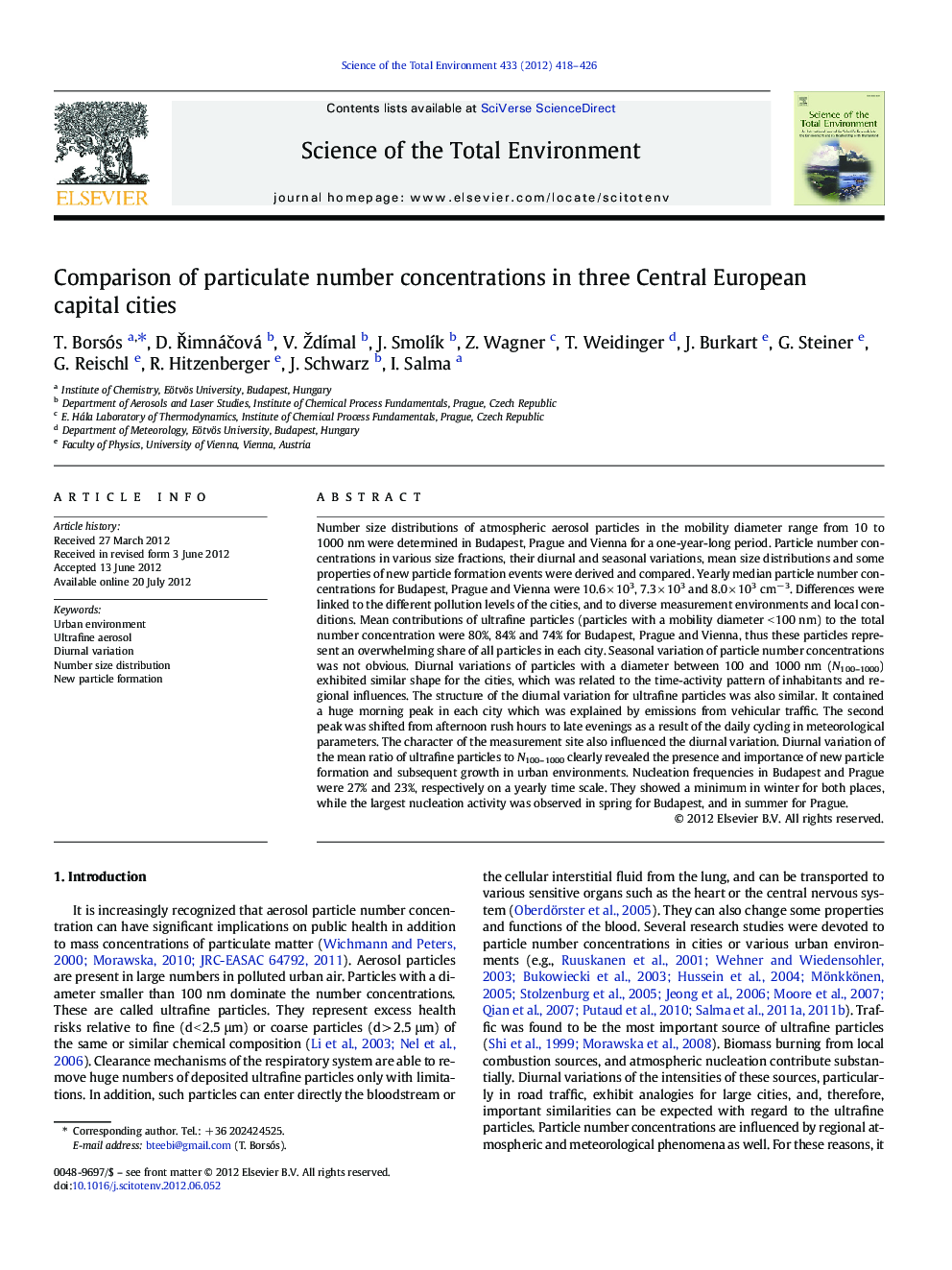| کد مقاله | کد نشریه | سال انتشار | مقاله انگلیسی | نسخه تمام متن |
|---|---|---|---|---|
| 6333999 | 1619819 | 2012 | 9 صفحه PDF | دانلود رایگان |

Number size distributions of atmospheric aerosol particles in the mobility diameter range from 10 to 1000 nm were determined in Budapest, Prague and Vienna for a one-year-long period. Particle number concentrations in various size fractions, their diurnal and seasonal variations, mean size distributions and some properties of new particle formation events were derived and compared. Yearly median particle number concentrations for Budapest, Prague and Vienna were 10.6 Ã 103, 7.3 Ã 103 and 8.0 Ã 103 cmâ 3. Differences were linked to the different pollution levels of the cities, and to diverse measurement environments and local conditions. Mean contributions of ultrafine particles (particles with a mobility diameter < 100 nm) to the total number concentration were 80%, 84% and 74% for Budapest, Prague and Vienna, thus these particles represent an overwhelming share of all particles in each city. Seasonal variation of particle number concentrations was not obvious. Diurnal variations of particles with a diameter between 100 and 1000 nm (N100-1000) exhibited similar shape for the cities, which was related to the time-activity pattern of inhabitants and regional influences. The structure of the diurnal variation for ultrafine particles was also similar. It contained a huge morning peak in each city which was explained by emissions from vehicular traffic. The second peak was shifted from afternoon rush hours to late evenings as a result of the daily cycling in meteorological parameters. The character of the measurement site also influenced the diurnal variation. Diurnal variation of the mean ratio of ultrafine particles to N100-1000 clearly revealed the presence and importance of new particle formation and subsequent growth in urban environments. Nucleation frequencies in Budapest and Prague were 27% and 23%, respectively on a yearly time scale. They showed a minimum in winter for both places, while the largest nucleation activity was observed in spring for Budapest, and in summer for Prague.
⺠Yearly median particle number concentrations were 10.6ï´103, 7.3ï´103 and 8.0ï´103 cm-3 for Budapest, Prague and Vienna. ⺠The mean contribution of ultrafine aerosol particles to the total number concentration was 74-84%. ⺠Diurnal variations of number concentration contained three concentration peaks, and had a similar pattern for the cities. ⺠The peaks were related to the time-activity pattern of inhabitants and to typical timing of nucleation events. ⺠New particle formation has a marked seasonal variation in the cities.
Journal: Science of The Total Environment - Volume 433, 1 September 2012, Pages 418-426